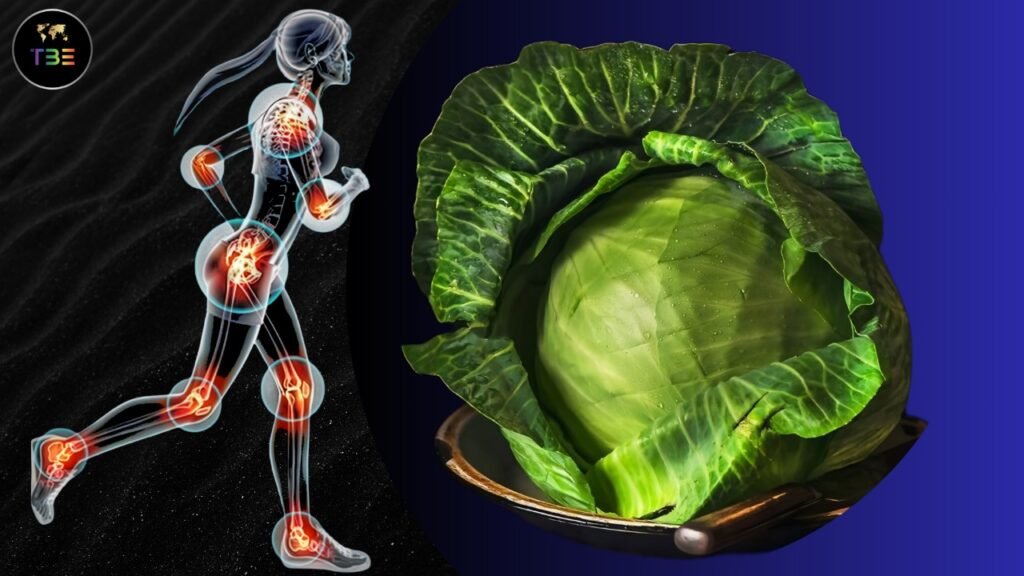Many people might connect natural treatments for joint pain with turmeric or Epsom salts, but an outdated method called wrapping feet in cabbage leaves is making a resurgence. This seems like a straightforward cure that takes advantage of cabbage’s high nutritional content and possible medical advantages. Does it, however, actually function? In order to understand the science behind this conventional method and investigate further natural options for treating joint soreness, we look into the benefits of cabbage leaves.
The Remedies Found in Cabbage Leaves
Cabbage gives multiple nutrients and phytonutrients that may provide unexpected health benefits, in addition to being common ingredients in salads and soups. Cabbage leaves are high in antioxidants, including vitamin C, and anti-inflammatory compounds that may help reduce joint pain. Wrapping cabbage leaves around your feet allows these nutrients to be absorbed through the skin. This method is a simple, organic treatment that has been used for generations since it helps to relieve pain and reduce swelling.
How to Treat Joint Pain with Cabbage Leaves
To effectively use cabbage leaves for joint pain relief, follow these steps:
- Select Fresh and Clean Leaves: Choose fresh cabbage leaves that are undamaged and clean them thoroughly to remove any chemicals or dirt.
- Release the Beneficial Juices: Using a rolling tool or your hands, gently smash the leaves to release their natural juices.
- Apply to Affected Areas: Place the crushed cabbage leaves directly on the painful areas of your feet or joints.
- Wrap with a Cloth or Bandage: Secure the cabbage leaves with a cloth or bandage, allowing the nutrients to be absorbed.
- Leave on for 30 Minutes to an Hour: Keep the cabbage leaves on the affected areas for up to an hour. Repeat a few times a week for the best results.
The Science Behind Cabbage Leaves
Several compounds found in cabbage leaves have the potential to reduce pain and inflammation. These include:
- Vitamin C: An antioxidant that helps reduce oxidative stress and may lower inflammation.
- Phytonutrients: Plant-based compounds with anti-inflammatory properties.
- Minerals: Potassium and calcium in cabbage may support overall joint health.
Although direct research on cabbage leaves for joint pain is limited, the individual components have been studied for their potential analgesic and anti-inflammatory effects.
Exploring Other Natural Remedies
If cabbage leaves aren’t your preference, here are some other natural remedies that can help alleviate joint pain:
- Turmeric: Contains curcumin, known for its anti-inflammatory and antioxidant properties. Adding turmeric to your diet or taking supplements can help reduce inflammation.
- Ginger: Another powerful anti-inflammatory agent, which can be consumed raw, in tea, or as a supplement to help reduce joint stiffness.
- Epsom Salt Soak: Soaking in a warm Epsom salt bath can relax muscles and reduce joint inflammation.
- Essential Oils: Oils like lavender, peppermint, and eucalyptus have pain-relieving qualities. They can be mixed with a carrier oil and applied topically.
- Exercise: Regular, gentle exercise like yoga, swimming, or stretching helps maintain joint flexibility and strength.
- Heat and Cold Therapy: Applying heat or cold packs to painful areas can offer immediate relief.
Essential Points to Keep in Mind
Although natural remedies can provide some relief, seeking medical advice should always come first. It’s important to talk to a doctor before trying new treatments, especially if you have underlying health conditions or are on medication.
Maintaining a holistic approach to joint health is crucial. This includes:
- A Balanced Diet: Consume foods high in vitamins and minerals that reduce inflammation.
- Regular Exercise: Engage in activities that enhance joint flexibility and strength.
- Stress Management: Practice stress management techniques, as chronic stress can worsen joint pain.
Conclusion
The use of cabbage leaf treatment is an intriguing blend of traditional medicine and modern health knowledge. While scientific evidence directly supporting its efficacy is limited, the nutrients in cabbage leaves and other natural remedies show promise in reducing joint pain. By incorporating these techniques into a comprehensive joint health strategy with medical advice, individuals may find both relief and improved overall health.

















Leave a Reply